1. Holding Onto Too Many Throw Pillows
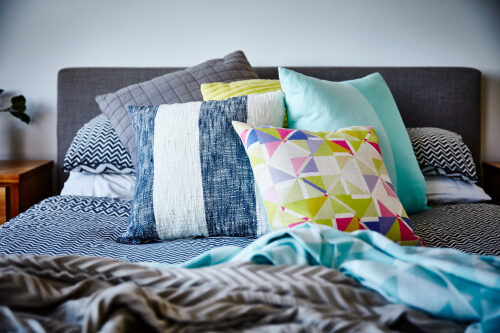
Throw pillows can look cozy, but having too many quickly takes a bed from inviting to overwhelming. They often end up on the floor or piled awkwardly, making the room feel untidy even when the bed is made. Extra pillows also collect dust and require frequent washing, which many people don’t keep up with. A handful of well-chosen pillows can add comfort without crossing into clutter.
Limiting pillows helps the eye focus on the bed itself, which should be the centerpiece of the bedroom. Choosing different textures or sizes in moderation makes more of an impact than sheer quantity. When pillows serve both comfort and style, the room feels intentional rather than chaotic. A few good ones are always better than a mountain of them.
2. Overcrowding Nightstands
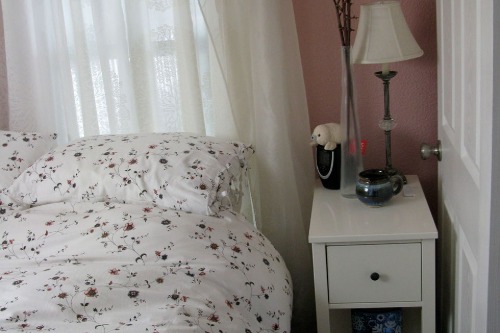
Nightstands are meant to keep essentials within reach, but they often become catch-all surfaces. Books, chargers, glasses, and decorative items easily pile up until there’s no free space left. A cluttered nightstand can make winding down feel stressful rather than relaxing. It also makes cleaning more difficult and can even disrupt sleep routines.
Keeping just the basics—like a lamp, a book, or a water glass—prevents visual overload. Drawers or trays can help corral small items so they don’t spill across the surface. When the nightstand is tidy, the whole bedroom feels calmer. It sets the tone for a space that’s meant to restore rather than overwhelm.
3. Keeping Every Piece of Furniture
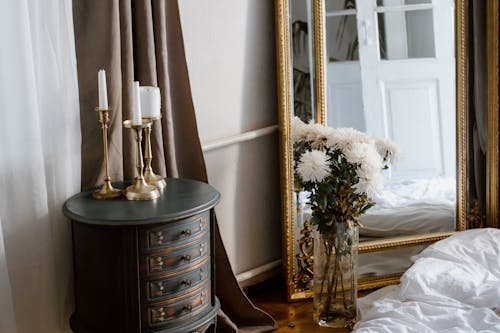
Bedrooms with too much furniture often feel cramped and busy. Many people keep old dressers, chairs, or side tables they don’t truly need. Instead of creating extra storage, this often just provides more space for clutter to spread. It also disrupts the flow of movement in the room.
Being selective with furniture allows the space to breathe. The bed and a few well-chosen pieces are usually all that’s necessary. Multi-functional furniture, like a storage bench, can replace several smaller items. Fewer pieces make the room more comfortable and easier to keep organized.
4. Filling Walls With Too Much Art
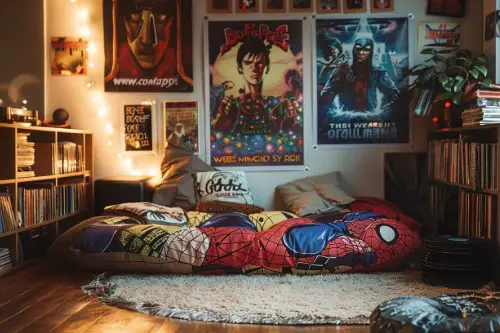
Artwork adds personality, but too much of it can make walls feel chaotic. When every inch is covered, the eye has no place to rest. This creates a visual busyness that competes with the room’s calming purpose. It can even make the space look smaller than it is.
A curated approach works best in bedrooms. Choosing one or two larger pieces or a balanced gallery wall creates impact without overload. Leaving some negative space helps highlight the artwork that’s there. This makes the decor feel intentional and serene instead of crowded.
5. Holding Onto Outdated Bedding
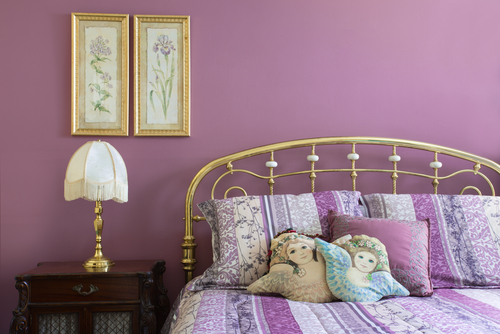
Old comforters, mismatched sheets, and worn blankets can pile up and create a cluttered feel. Even if they’re clean, faded or pilled fabrics drag down the room’s appearance. Bedding is one of the largest visual elements in the bedroom, so its condition sets the tone. Keeping too many extras stuffed into closets can also add to hidden clutter.
Refreshing bedding doesn’t require frequent replacements—just thoughtful editing. Sticking to two or three good-quality sets prevents storage overload. Choosing colors and textures that complement the room makes the bed look polished. A tidy bed naturally makes the whole room look calmer.
6. Excessive Knick-Knacks
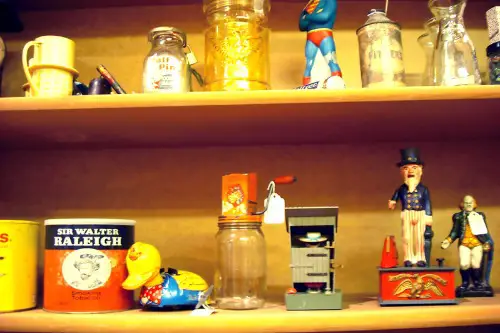
Little decorative items can quickly turn into dust-collecting clutter. When dressers and shelves are covered in trinkets, the room loses its sense of calm. Too many small objects can also compete visually, leaving no clear focal point. Instead of feeling cozy, the space feels crowded and disorganized.
Curating just a few meaningful pieces makes each one stand out. A single vase, framed photo, or candle can add personality without overwhelming surfaces. Rotating decor seasonally can also keep things fresh without multiplying items. Less really is more when it comes to bedroom knick-knacks.
7. Using Rugs That Are Too Small
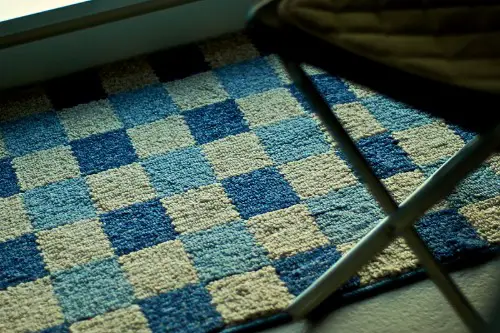
A rug that’s undersized can throw off the balance of the entire bedroom. Small rugs often look like an afterthought and create chopped-up visual lines. Instead of anchoring the bed, they just add to a sense of clutter. This can make the space feel incomplete or awkward.
Choosing the right rug size ties the room together. Ideally, it should extend under the bed with space on either side for symmetry. A properly sized rug helps ground the furniture, making the room look larger and calmer. It turns the rug from a tripping hazard into a unifying design element.
8. Overstuffing Closets
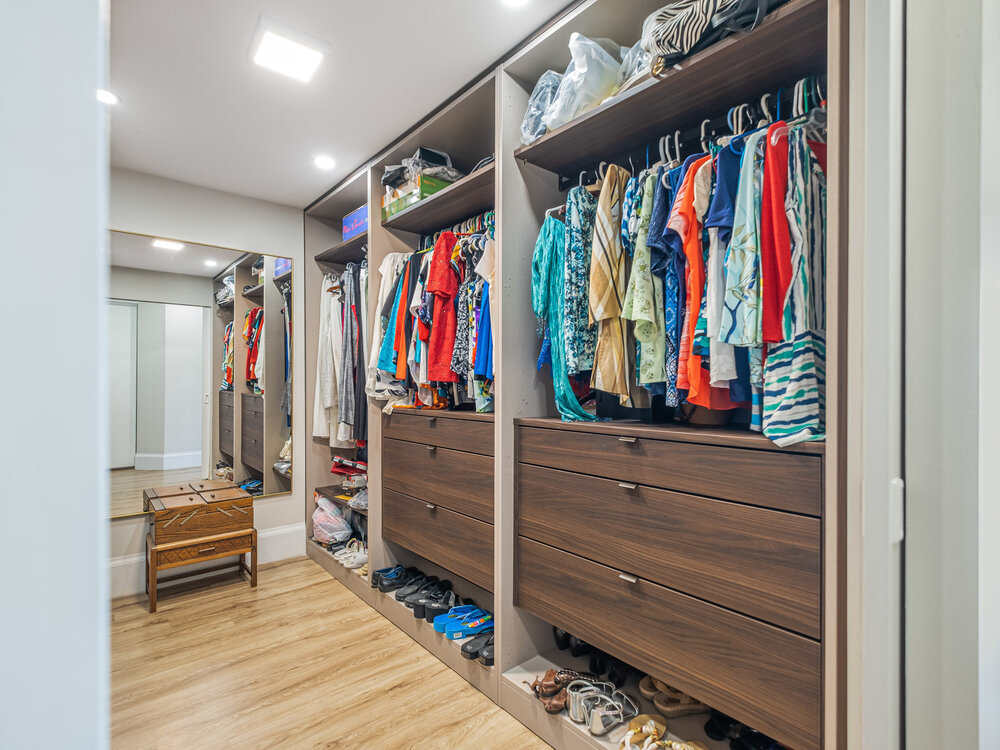
Closets bursting with clothes and shoes create hidden clutter that spills into the bedroom. When storage is maxed out, it often leads to piles on chairs, floors, or beds. This not only makes the room look messy but also makes it harder to find what you need. The stress of an overstuffed closet often bleeds into the overall mood of the room.
Regular decluttering keeps closets manageable. Donating items you don’t wear creates space for pieces you truly enjoy. Using organizers like bins or shelf dividers also prevents things from spilling out. A streamlined closet helps the bedroom feel lighter and less chaotic.
9. Blocking Natural Light With Heavy Curtains
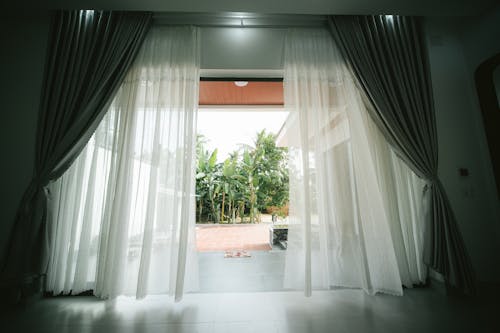
Thick, dark curtains can make a bedroom feel smaller and more cluttered. They block natural light, which is essential for making a room look open and airy. Without enough daylight, surfaces and objects appear heavier and more crowded. Overly layered window treatments also collect dust and require more upkeep.
Lighter fabrics or layered shades can strike a balance between privacy and brightness. Choosing curtains that can easily be drawn back allows more light to filter in. Natural light highlights the room’s best features while reducing the feeling of clutter. It transforms the atmosphere from closed-in to refreshing.
10. Hanging Onto Too Many Books

While books are wonderful, an excess can overwhelm a bedroom. Stacks on nightstands, floors, or windowsills add instant clutter. Bookshelves that are jam-packed can also look messy, even if the books are neatly lined up. The room shifts from restful to busy when every surface holds a pile.
A simple edit can make a big difference. Keeping just a few favorites or current reads in the bedroom helps the space breathe. Larger collections can be stored in another room better suited for display. The bedroom then becomes a retreat rather than a library overflow.
11. Overdoing Patterns and Colors
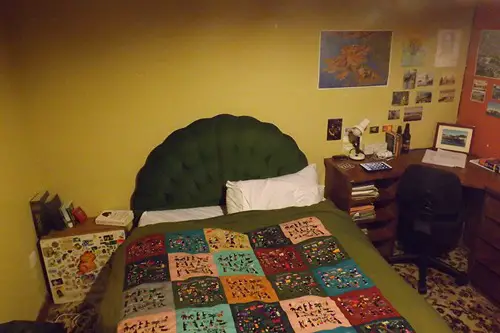
Mixing patterns can be fun, but too many in one space creates visual chaos. Busy bedding, patterned rugs, and loud curtains all competing for attention make the room feel disorderly. Even if everything is neatly arranged, the eye reads it as clutter. This is especially true in smaller bedrooms.
Sticking to a cohesive palette brings harmony. Layering textures instead of multiple patterns creates depth without confusion. A few pops of color can stand out against a more neutral base. This balance makes the space restful while still reflecting personality.
12. Using Surfaces for Storage
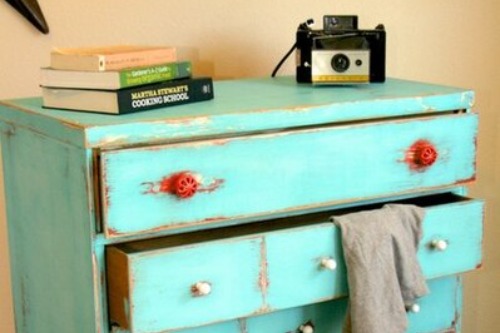
Flat surfaces like dressers often end up doubling as storage for laundry, bags, or mail. This creates a feeling of clutter even if the items are “organized.” Over time, these surfaces lose their decorative function and become dumping grounds. It also makes daily cleaning and dusting more of a chore.
Limiting surfaces to a few essentials keeps them functional. Decorative trays or baskets can help contain items while still looking tidy. Regularly clearing these spaces prevents buildup and restores order. When surfaces are free, the whole room feels calmer and more spacious.
13. Skipping Under-Bed Organization
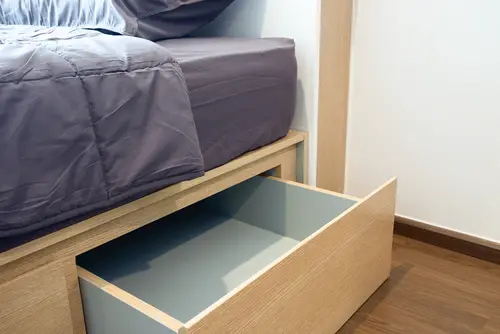
Many people use the space under the bed as hidden storage, but without structure, it becomes a clutter trap. Loose boxes, bags, and forgotten items pile up out of sight. This hidden mess contributes to a subconscious sense of disorder. It also makes cleaning under the bed almost impossible.
Using proper storage bins keeps things contained and accessible. Clear or labeled containers make it easier to know what’s stored where. Keeping this space organized frees up closets without adding clutter. A tidy under-bed area contributes to an overall sense of calm.
14. Keeping Electronics Everywhere
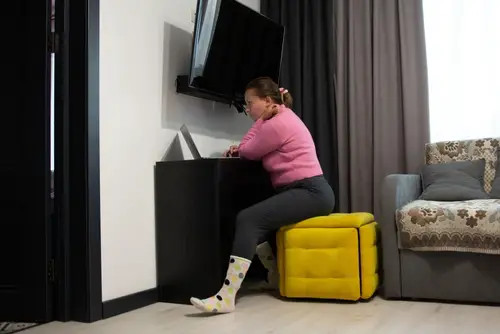
Phones, tablets, cords, and chargers often spread across the bedroom. The tangle of wires and blinking lights creates visual clutter. Electronics also take away from the restful purpose of the room by encouraging screen time. They add both physical and mental noise to the space.
Designating one small charging area keeps cords contained. Wireless chargers or cord organizers can also reduce mess. Moving less-used devices to another room keeps surfaces clear. A bedroom with fewer electronics feels both cleaner and more restful.
This post 14 Bedroom Decor Habits That Make Homes Feel Cluttered was first published on Greenhouse Black.
